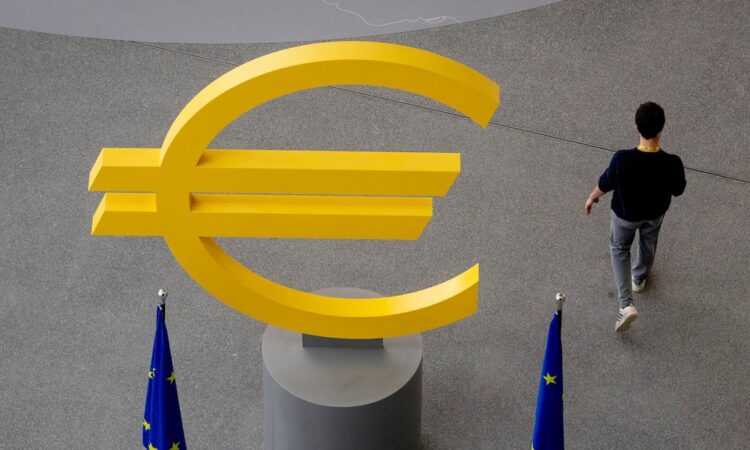
For the first time in almost five years, the European Central Bank cut its key interest rate by a quarter percentage point on Thursday, moving from 4.0% to 3.75% in a widely anticipated decision by the bank’s governing body.
The change comes as the U.S. Federal Reserve continues to stand pat on its federal funds rate range of 5.25% to 5.5%, the highest in decades and one that has remained unmoved since last summer.
The 20-nation eurozone saw core inflation, a metric that strips out volatile food and energy prices, tick down to 2.7% in April, sliding from March’s 2.9% rate. The U.S. Consumer Price Index saw an annual rate of 3.6% in April, down slightly from the previous month.
″Based on an updated assessment of the inflation outlook, the dynamics of underlying inflation and the strength of monetary policy transmission, it is now appropriate to moderate the degree of monetary policy restriction after nine months of holding rates steady,” the European Central Bank Governing Council said in a statement.
The divergence in central bank policy strategy between the EU and U.S. is one economists say is a reflection of their respective economies’ current, and divergent, trends. While the collective economic vitality of eurozone countries has seen a stalling out since 2022, the U.S. economy has shown surprising resilience in the face of the Fed’s efforts to cool things off through interest rate increases.
Other Western country central banks that have made recent downward adjustments to key interest rates include those in Canada, Sweden and Switzerland, per CNBC.
What will the Fed do?
Average prices on U.S. goods and services rose 4.1% overall in the first four months of 2024, per The Wall Street Journal, a rate that has compelled the Fed to continue to push any downward adjustment to its overnight lending rate until the end of the summer, at the earliest.
“We did not expect this to be a smooth road, but these were higher than I think anybody expected,” Federal Reserve Chairman Jerome Powell said last month.
Interest rate adjustments are the Fed’s primary weapon to bring down the elevated prices of consumer goods and services. While the monetary body has paused making any rate adjustments since its July 2023 meeting, it had imposed 11 increases going back to March 2022, the most aggressive series of rate hikes in decades.
The rate increases raise the cost of debt for businesses and consumers, a move that aims to reduce the amount of spending and overall economic activity. That shift in dynamics typically leads to lower inflation rates.
What is the U.S. inflation rate?
The latest Personal Consumption Expenditure report from the U.S. Department of Commerce, released May 31, found that while inflation still inched up from March to April, it was the smallest monthly increase so far this year and annual inflation held steady.
The report found the core PCE index, which excludes volatile food and energy prices, rose .2% from March and came in at an annual rate of 2.8% for April, matching March’s 12-month rate. Overall prices captured in the measure rose .3% month over month, matching the previous monthly uptick, and held steady at an annual rate of 2.7% in April.
The core PCE index is the Fed’s preferred metric when it comes to how the monetary body assesses inflationary impacts.
Near the end of last year, Powell was sounding optimistic about the direction of the U.S. economy and signaled 2024 could see a series of downward adjustments to the monetary body’s benchmark federal funds rate.
But that rosy glow faded somewhat as the first months of the year saw inflation bucking a steady downward trend that was in play for most of 2023 and has instead been back on the rise.
And at the conclusion of the Fed’s policy meeting in May, Powell said that inflationary persistence helped push the body’s Open Market Committee to support standing pat on the 5.25% to 5.5% interest rate range that has been in play since last July and is the highest in over 20 years.
“In recent months, inflation has shown a lack of further progress toward our 2% objective,” Powell said during a May 1 press conference. “It is likely that gaining greater confidence will take longer than previously expected.”





